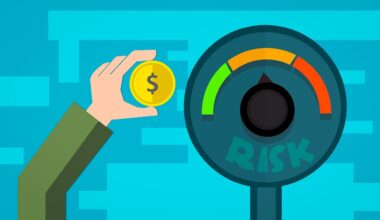How to Use Ichimoku Cloud for Global Markets Analysis
The Ichimoku Cloud is a robust technical analysis tool that offers traders comprehensive insights into market trends and potential reversals. Originating in Japan, the Ichimoku Cloud provides multiple data points on a single chart, defining support/resistance levels, trend directions, and momentum. To utilize the Ichimoku effectively in global markets analysis, one needs to familiarize themselves with its five main components: Tenkan-sen, Kijun-sen, Senkou Span A, Senkou Span B, and Chikou Span. Each of these elements plays a significant role in analyzing market movements. Identifying the clouds formed by the Senkou Span A and B helps traders visualize potential market conditions. The Ichimoku Cloud can help you determine if a market is in a bullish, bearish, or sideways trend. Thus, understanding how to read these signals is crucial when making trading decisions in various assets, such as forex, stocks, or commodities. When properly applied, Ichimoku can serve as a comprehensive guide to interpreting price actions and support traders in optimizing their entry and exit positions.
To properly interpret the Ichimoku Cloud, one must first understand how each component interacts with price movements. The Tenkan-sen and Kijun-sen lines are swift indicators that help traders identify short-term trends. When the Tenkan-sen crosses above the Kijun-sen, it indicates a potential bullish signal, while a crossover below suggests a bearish outlook. However, these signals can be misleading if viewed in isolation; utilizing the cloud adds another layer of context. For effective trading strategies, one should not only rely on the cloud formation but observe how the price behaves concerning these indicators. Traders often look for price to remain above the cloud when in a long position and below it for short positions. This way, the Ichimoku Cloud acts as dynamic support and resistance zones, helping traders better position their trades. Furthermore, practicing with historical data can provide insights into how the Ichimoku Cloud performed during past market conditions. Continual practice and analysis contribute significantly to mastering this powerful analytical tool and increase success rates in a highly competitive trading environment.
Implementing Ichimoku Cloud in Trading Strategies
Implementing the Ichimoku Cloud into trading strategies can significantly enhance decision-making processes. One effective method is combining the Ichimoku Cloud with other indicators for better confirmation of entry and exit points. For example, utilizing the Relative Strength Index (RSI) alongside the Ichimoku can help identify overbought or oversold conditions. When the RSI aligns with Ichimoku signals, traders can increase their confidence in the trade. Additionally, implementing a risk management approach while using the cloud is crucial. Setting stop-loss orders just below the Kijun-sen, for instance, can protect against unexpected market movements. Another strategy involves observing price action relative to the cloud, looking for breakouts and pullbacks. A breakout above the cloud might indicate a bullish trend, while a price reversal back below could signal a potential sell-off. Furthermore, using time frames that suit trading objectives is essential—short-term traders may benefit from smaller time frames like 15-minute or hourly charts, while long-term traders might rely more on daily charts for comprehensive analysis. Ultimately, integrating Ichimoku effectively allows traders to navigate market complexities more confidently.
One of the most valuable aspects of the Ichimoku Cloud is its ability to adapt to various asset classes in global markets. Whether analyzing currency pairs, commodities, or stock indices, the principles of Ichimoku remain applicable across the board. However, traders must approach each market with a unique perspective and recognize specific characteristics. For example, the forex market may exhibit different volatility levels compared to commodities, influencing the effectiveness of the Ichimoku signals. As such, adapting the cloud parameters, like adjusting the periods for Tenkan-sen and Kijun-sen, can tailor the analysis to specific assets. Continuous backtesting and optimizing the parameters can improve the approach further. Additionally, it is crucial to remain aware of macroeconomic factors that influence market movements. Events such as interest rate changes, geopolitical issues, or significant financial reports can impact how the Ichimoku signals interact with price movements. Consequently, when these external influences are layered onto Ichimoku analysis, traders are far better positioned to make informed decisions. Integration of fundamental analysis alongside technical insights from the Ichimoku Cloud creates a robust trading framework.
Common Mistakes in Using Ichimoku Cloud
While the Ichimoku Cloud is a powerful tool, traders often make mistakes that can lead to unprofitable trades. One common issue is misinterpretation of the cloud’s signals, leading to premature entries or exits. Traders must remember that trends often experience corrections before continuing in their primary direction. Another significant error occurs when traders fail to consider the overall market context, relying solely on Ichimoku signals. Context matters—if broader economic indicators suggest a bearish environment, ignoring these factors while solely focusing on Ichimoku might lead to unfavorable outcomes. Additionally, neglecting proper risk management can exacerbate trading mistakes. It is paramount to utilize stop-loss orders and only risk a small percentage of the trading account in each trade. Moreover, failure to keep a trading journal to analyze performance can hinder growth. By documenting trades and evaluating decisions made with the Ichimoku Cloud, traders can identify patterns, improve strategies, and ultimately enhance forecasting abilities. Thus, learning from mistakes while utilizing the Ichimoku Cloud is essential in refining skills and achieving trading success.
Ultimately, mastering Ichimoku Cloud analysis requires patience, education, and practice. While the initial learning curve may seem steep, the benefits gained from understanding this comprehensive tool far outweigh the challenges. It provides traders with a multi-dimensional approach to analyzing price movements, significantly informing trading decisions across various markets. Continuous education, including reading books or attending workshops, can provide deeper insights and foster skill development. Additionally, engaging with online communities or forums can help aspiring traders share experiences, ask questions, and learn from one another. Many platforms provide demo accounts where traders can practice applying the Ichimoku Cloud without the risk of capital loss. Utilizing such resources can cultivate familiarity and comfort with the tool before committing to live trades. Furthermore, staying updated on market trends, evolving practices, and new interpretations of the Ichimoku Cloud can enhance overall knowledge and proficiency. Combining technical analysis tools like the Ichimoku with fundamental analysis strengthens the foundation for making informed trading decisions. In conclusion, mastering the Ichimoku Cloud requires dedication and continual learning—a journey towards becoming a proficient trader.
Conclusion: Leveraging Ichimoku Cloud for Trading Success
In conclusion, leveraging the Ichimoku Cloud for trading success involves an understanding of its components, an awareness of market conditions, and a disciplined approach to trading. Integrating the cloud into a broader strategy enables traders to harness the power of this versatile tool, transforming market complexities into actionable insights. As traders utilize the Ichimoku Cloud alongside other indicators and risk management techniques, they pave their road to potential profitability. Continuous practice, education, and an open mindset towards improvement can significantly enhance their trading prowess. The adaptability of Ichimoku across different financial instruments allows for a personalized approach and a better understanding of each market’s dynamics. Embracing the challenges of trading while utilizing analytical tools will empower traders to navigate global markets effectively. As the landscape of trading continues to evolve, the tried-and-true insights offered by the Ichimoku Cloud will undoubtedly remain relevant. Success in trading comes not only from knowing tools like the Ichimoku but from developing a holistic understanding of market dynamics, psychology, and personal discipline. By prioritizing learning and adaptability, traders can position themselves favorably for future success.
To properly interpret the Ichimoku Cloud, one must first understand how each component interacts with price movements. The Tenkan-sen and Kijun-sen lines are swift indicators that help traders identify short-term trends. When the Tenkan-sen crosses above the Kijun-sen, it indicates a potential bullish signal, while a crossover below suggests a bearish outlook. However, these signals can be misleading if viewed in isolation; utilizing the cloud adds another layer of context. For effective trading strategies, one should not only rely on the cloud formation but observe how the price behaves concerning these indicators. Traders often look for price to remain above the cloud when in a long position and below it for short positions. This way, the Ichimoku Cloud acts as dynamic support and resistance zones, helping traders better position their trades. Furthermore, practicing with historical data can provide insights into how the Ichimoku Cloud performed during past market conditions. Continual practice and analysis contribute significantly to mastering this powerful analytical tool and increase success rates in a highly competitive trading environment.


